Beef Cattle Production and Lifecycle
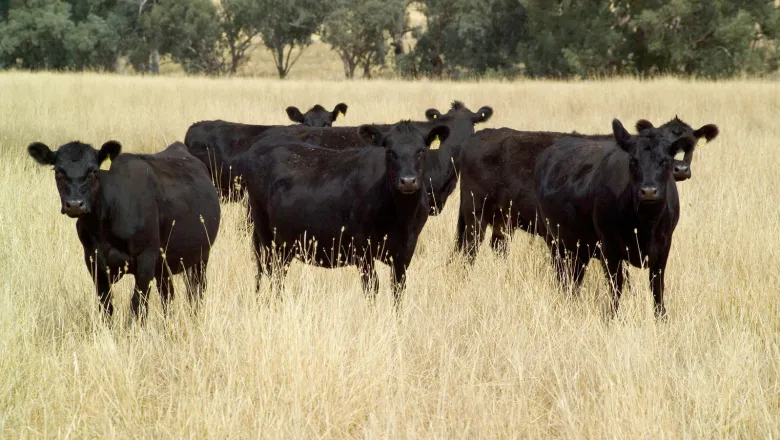
Educator Resources
Beef Cattle Production and Lifecycle
The journey of beef cattle from birth to plate can be complex. This is due to the changing needs of the animal as it progresses through its lifecycle. Because of these changing needs and depending on where the animal is in its lifecycle, it will be moved to farms that specialize in the different stages of the production system. The farmers and ranchers that make up the cattle industry consist of a community of farms working consistently to provide humane, safe and environmentally sustainable care throughout the cattle’s lifecycle. The result is a safe, delicious and nutritious food the whole family can enjoy.
Beef Cattle Production System
The beef cattle production system can be divided into three general categories. Beef cattle will move through different stages within the system depending on where they are in their lifecycle.
Beef cattle production can be divided into three general categories:
- The cow-calf segment which produces feeder calves for further feeding/grazing.
- The backgrounding or stocker phase of production adds body weight to recently weaned calves, resulting in yearlings that are feedlot ready.
- The finishing stage of production is where cattle are fed until they reach market weight.
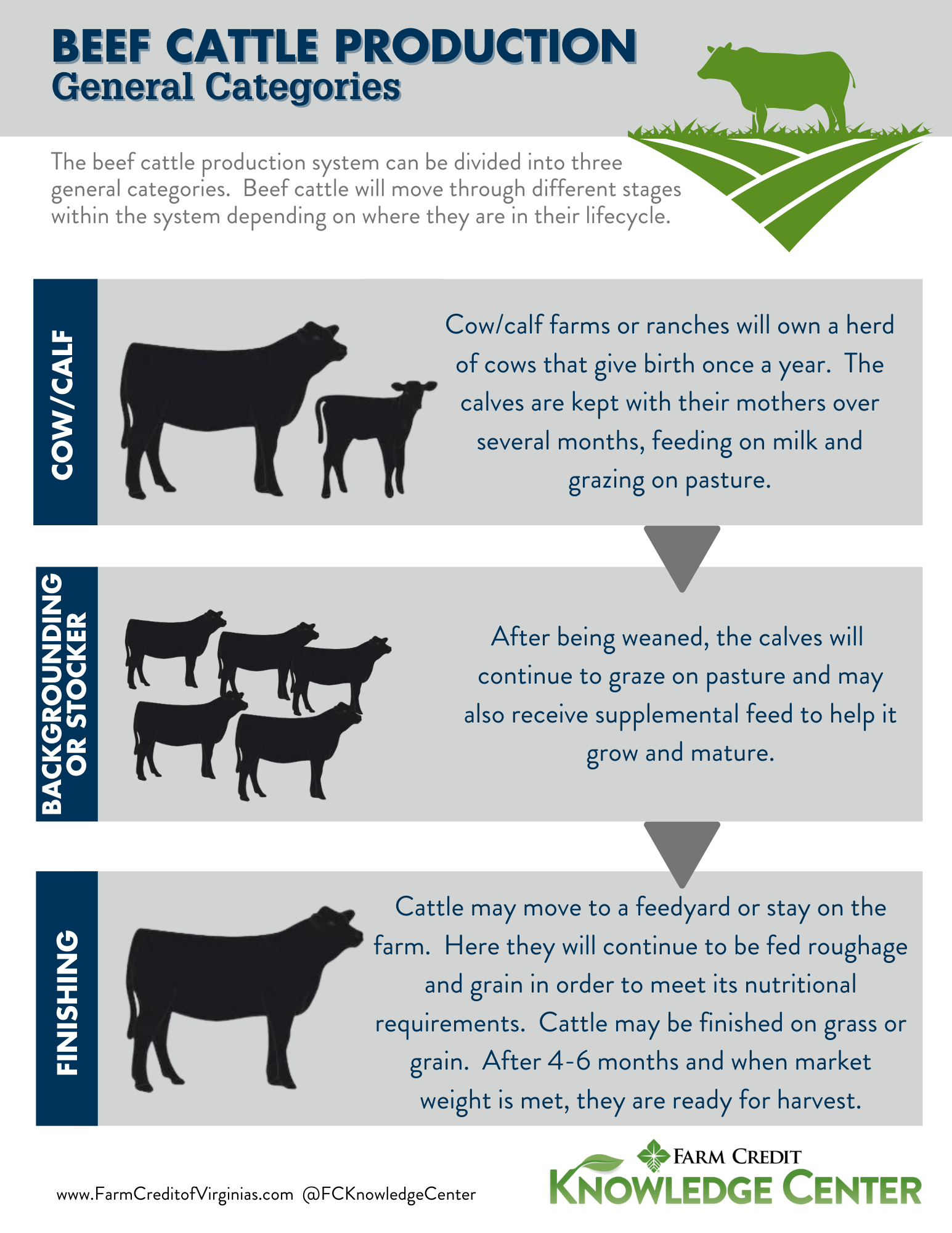
The Beef Cattle Lifecycle
The beef cattle production system can be grouped into three categories. However, the lifecycle of beef cattle is a bit more expansive. Not all cattle are raised through the stages with the end goal of being market ready. Beef cattle are bred and raised to withhold different roles within the system to help maintain the industry.
Cow/Calf Stage
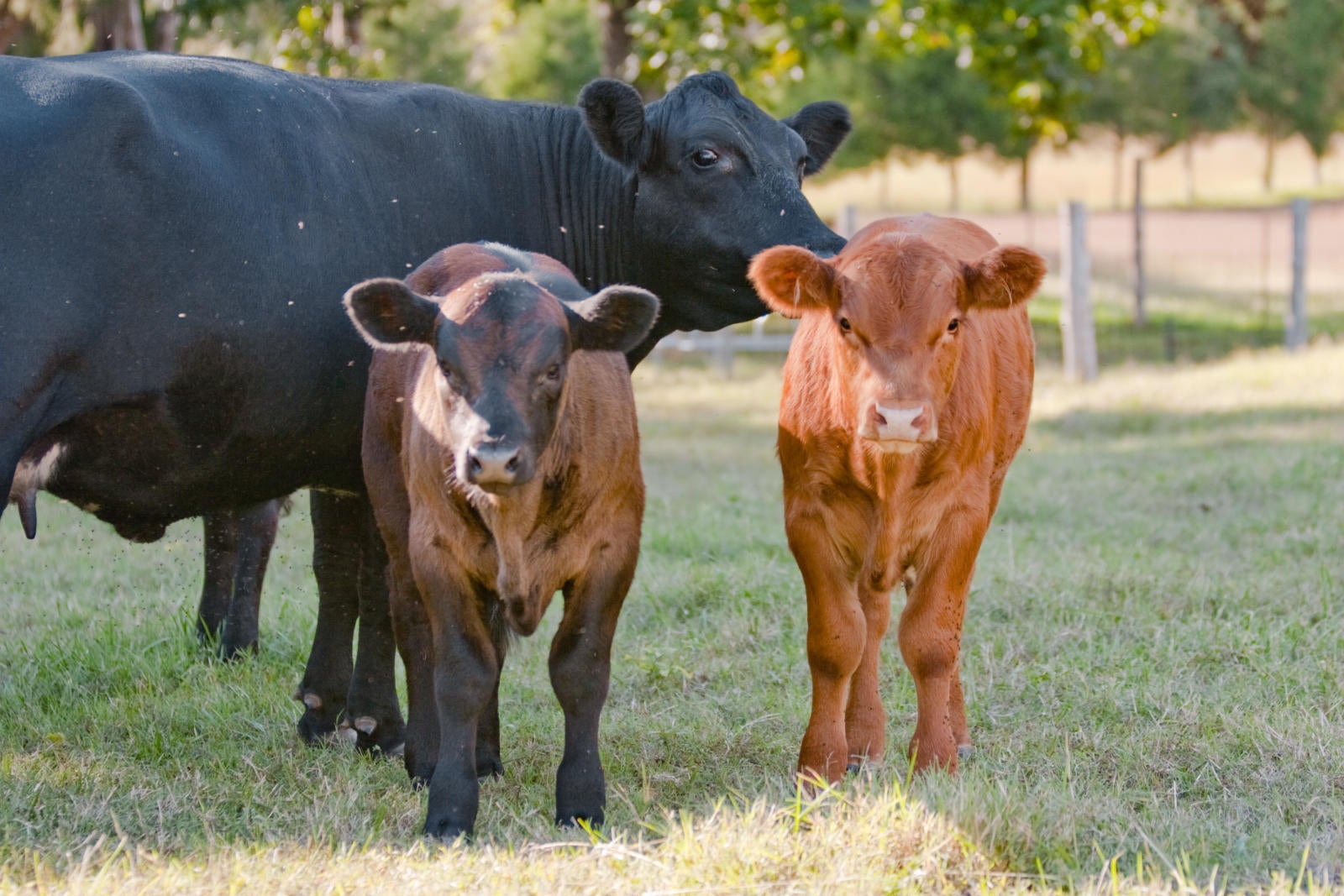
It begins when a cow calves either a heifer (female) or bull calf (male) after 285 days of gestation. Note-A cow can give birth to twins. When one is a bull calf and the other is a heifer calf, the female is more than likely infertile. The infertile female is called a freemartin.
Calves are weaned from their mother’s milk around the age of six to nine months of age and when they weigh between 500 and 700 pounds. During the weaning period they continue to graze on pasture.
Heifers may enter the beef production cycle or be kept on the farm as part of the breeding system. In this case the heifer is raised and prepared to be bred the following year.
Bull calves may enter the beef production cycle as a steer or be kept as a bull for future breeding purposes. The bull calf is raised and when of age, the bull will breed naturally or give semen for artificial insemination.

Backgrounding or Stocker Stage
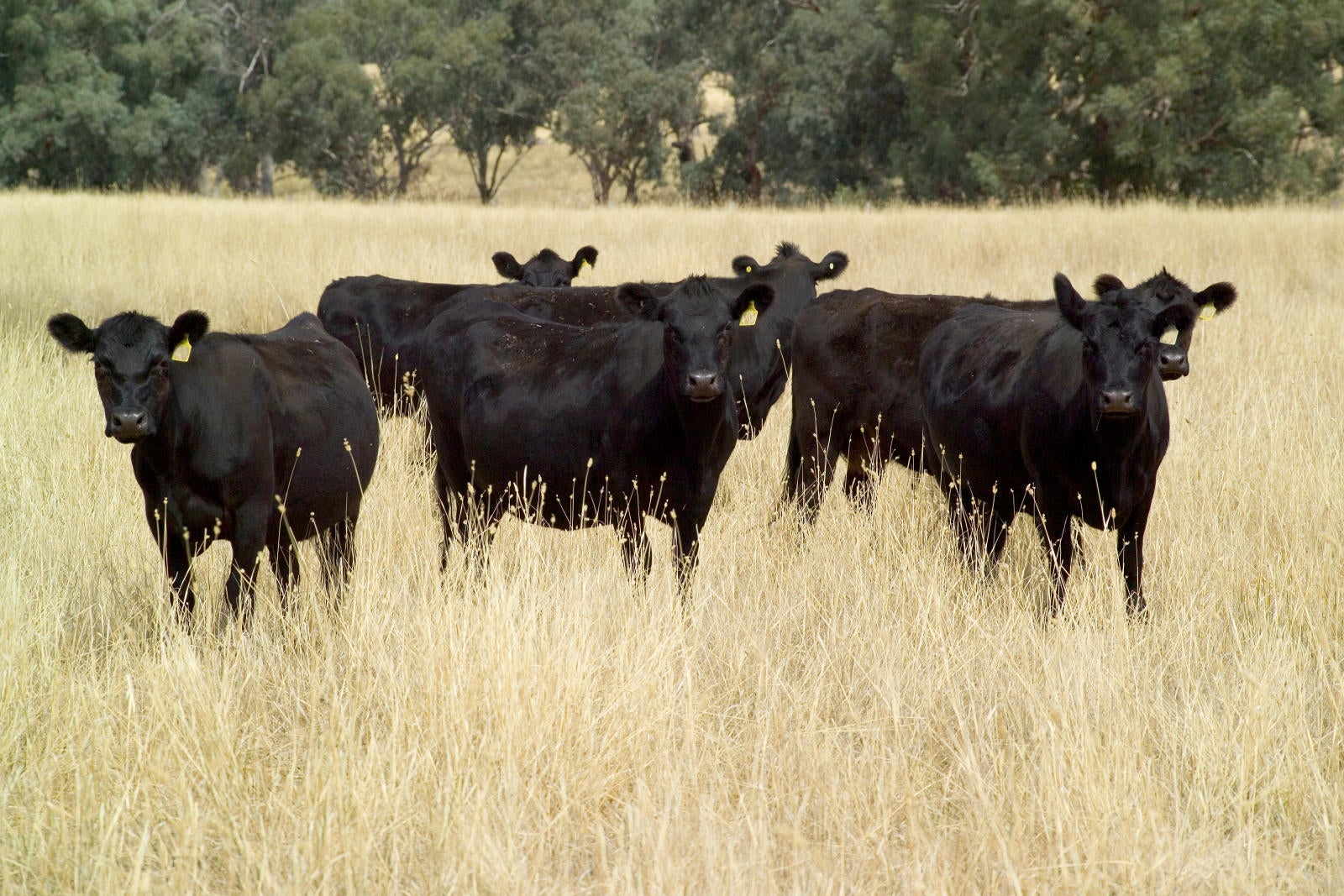
After weaning, cattle are sent to farms and/or ranches as backgrounders or stockers. This stage of the lifecycle consists of continued grazing, supplemental feed and vitamins and minerals to ensure nutritional needs are met for optimal growth.
Finishing Stage
When cattle are ready to be finished, they may be sent to a feedyard or they may stay on the farm. Cattle will spend around four to six months feeding from a well-balanced diet made up of roughage, grain and other renewable feed sources. Some cattle are finished on grain and some on grass. Learn more about grain-finished and grass-finished beef. Cattlemen work closely with veterinarians to provide proper and individualistic care.
Cattle are market ready when they meet market weight (usually 1,200 to 1,300 pounds). Market weight is met approximately 14-15 months of age. Once weight is met, they are sent to the packing plant. Packing plants are also called processing facilities and are fully monitored by the United States Department of Agriculture (USDA). The USDA has inspectors stationed in all federally-inspected packing plants. The inspectors oversee all aspects of the process to include safety, animal welfare and quality standards. The entire process from animal arrival to product shipment is monitored.
Beef products are shipped across the United States and abroad to meet the needs of grocery suppliers, retail establishments and restaurants. The foodservice and retail phase works to provide this wholesome and nutritious product to consumers.
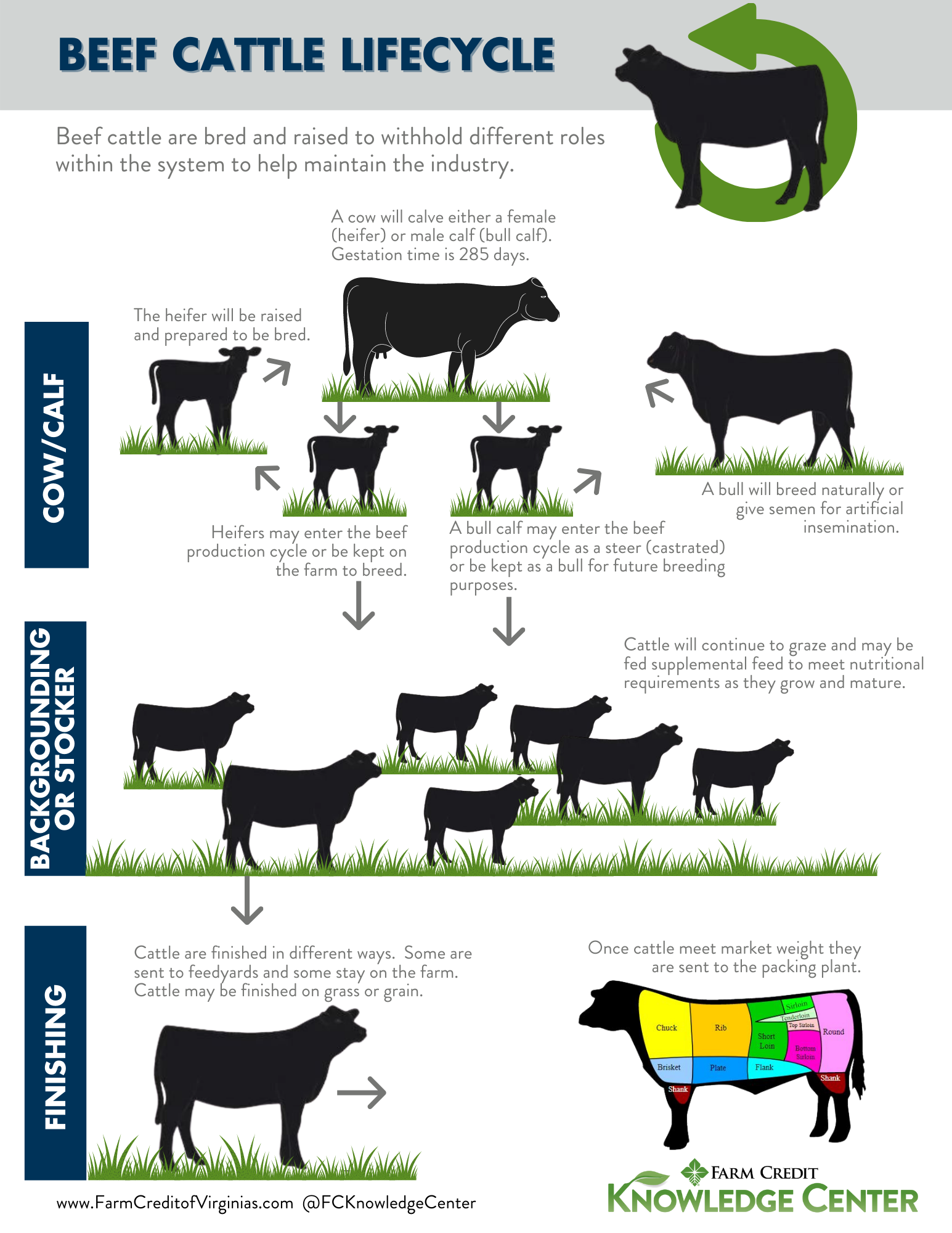
Beef Cattle Industry Terminology
Following are definitions of some common terms used in the cattle industry.
Artificial Insemination (A.I.) - The procedure for impregnating cows by manually placing semen in the reproductive tract of the female.
Average Daily Gain (ADG) - Calculation of post-weaning gain, figured by dividing the weight gain by the days on feed.
Backgrounder – Cattle that have been weaned and are growing and maturing until they meet the requirements for feedlot finishing.
Bred - Applies to the female definitely safe in calf, or pregnant; also used to refer to the mating process.
Bull - Uncastrated male cattle of any age.
Calf or calves - Young cattle of either sex less than one year of age.
Calving - Giving birth, also called “dropping a calf” or parturition.
Castrate - to remove the testes of male cattle.
Crossbred - An animal that has purebred parents or grade parents of different breeds.
Cow - Female cattle that have had one or more calves.
Feeder calf – A steer or heifer that is mature enough for backgrounding or to enter the finishing stage.
Finish - The degree of fatness
Finishing – The stage where cattle are fed and prepared for harvest.
Freemartin - The female member of unlike twins in cattle, showing many male characteristics and incapable of production.
Heat - The recurrent period of sexual receptiveness in mature cows, when the cow will stand for the bull to breed her; estrus.
Heifer - Female cattle that have not had a calf.
Open - Refers to the non-pregnant female.
Polled - Cattle that are born without horns.
Purebred - A beef animal whose parents are of the same breed and are recorded with the registry association.
Service - The act or ability to breed.
Steer - Male cattle that were castrated at an early age before any sex characteristics developed.
Stocker – Weaned cattle between six to nine months old and weighing between 400 and 700 pounds.
Supplement - Nutritional additive intended to remedy deficiencies of the diet, such as salt, minerals, protein.
Weanling – Cattle that have just weaned from their mother’s milk.
Sources: University of Arkansas Extension, Beefitswhatsfordinner.com, beef2live.com, wvbeef.com